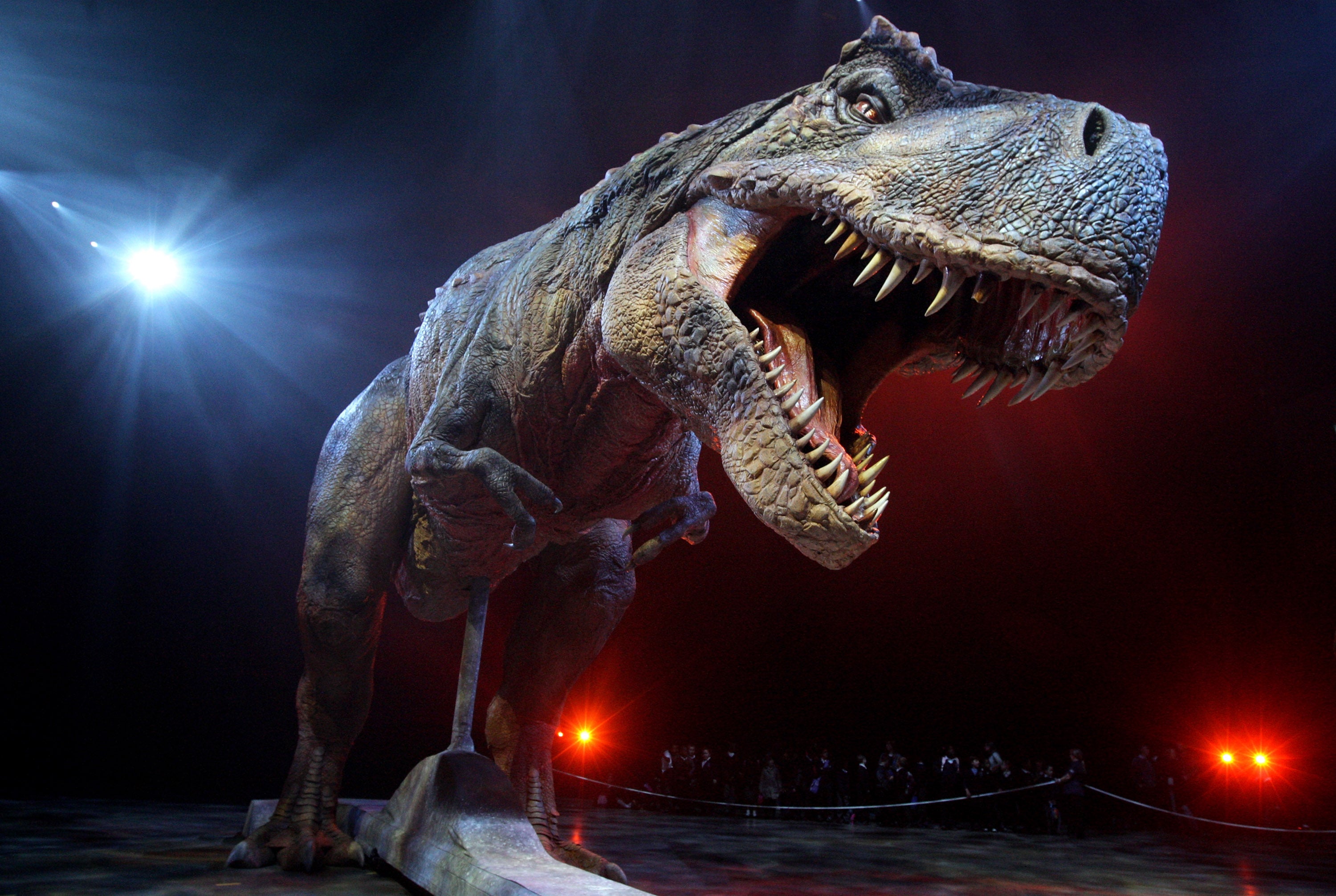T rex’s short arms may have lowered bite risk when they hunted and fed in packs, scientists suspect
Findings are based on new evidence suggesting some T rexes may have hunted in packs

The arms ofT rex likely shrank in length as an adaptation to prevent amputations when a pack of the mighty dinosaurs descended on carcasses with their massive heads and bone-crushing teeth, a new study has suggested.
Recent research, based on fossils recovered from a mass dinosaur grave in Utah, suggested that Tyrannosaurs may have hunted in packs, pursuing their prey together, as opposed to popular assumptions that they were solitary apex predators.
One question about the T.rex that scientists, including those from the University of California Berkeley say has remained a mystery is why their arms are so small.
A T rex that is 13m (45 foot) long may have had a skull 1.5m (5ft) long, but arms only about 1m (3ft) long.
To put this in perspective, researchers say this is the equivalent of a 1.8m (6ft) human with 12cm (5in) arms.
Now, in a new study, published online on Wednesday in the journal Acta Palaeontologia Polonica, scientists speculate that the dinosaur’s arms may have gotten smaller over generations as an adaptation to get them out of the way during pack feeding.
Researchers say young T rexes in particular would have been wise to wait until the larger adults were finished – akin to populations of the giant Komodo Dragon lizard of Indonesia in which the larger reptiles converge on the carcass after a kill and leave the remains for the smaller ones.
“What if several adult tyrannosaurs converged on a carcass? You have a bunch of massive skulls, with incredibly powerful jaws and teeth, ripping and chomping down flesh and bone right next to you. What if your friend there thinks you’re getting a little too close? They might warn you away by severing your arm,” Kevin Padian, distinguished emeritus professor of integrative biology at the UC Berkeley said in a statement.
“So, it could be a benefit to reduce the forelimbs, since you’re not using them in predation anyway,” Dr Padian explained, adding that severe bite wounds can lead to infection, haemorrhaging, shock, and eventual death.
Predecessors of the T.rex group of dinosaurs had longer arms, according to scientists, suggesting there may have been a reason that they became reduced in both size and joint mobility.
They say this would have affected not only the T. rex, which lived in North America at the end of the cretaceous period from about 145 million years to 66 million years ago, but also African and South American abelisaurids from the mid-cretaceous era.
Researchers said the factors affecting the arm length of these dinosaurs may have also affected carcharodontosaurids, which ranged across Europe and Asia in the early and mid-cretaceous periods and were even bigger than T rex.
Until now, early hypotheses speculated the short arms in T.rex might have been “pectoral claspers” – limbs that hold the female in place during copulation, analogous to some sharks and rays’ pelvic claspers, which are modified fins.
But researchers have found no evidence supporting this idea since the arms are too short to go around another T rex.
Over the years, hypotheses have varied from the arms being used for waving at potential mates for attraction to serving as an anchor. Some studies have also speculated that T rexes likely used their arms to get up from the ground, hold down prey, stab enemies, and even push over a sleeping Triceratops at night.
Hypotheses explaining why the arms would get smaller are untested or impossible, scientists said, adding that the best they could do is explain why they would maintain the small size.
“In every case, all of the proposed functions would have been much more effective if the arms had not been reduced,” Dr Padian said.
But with new evidence suggesting that some tyrannosaurids hunted in packs, not singly, as depicted in many paintings and dioramas, he sayid the arms likely shrank to get out of the way during pack feeding.
“The arms are simply too short. They can’t touch each other, they can’t reach the mouth, and their mobility is so limited that they can’t stretch very far, either forward or upward,” Dr Padian said.
“The enormous head and neck are way out in front of them and pretty much form the kind of death machine you saw in Jurassic Park,” he added.
While firmly establishing the hypothesis “may never be possible,” researchers say a correlation could be found if museum specimens around the world were checked for bite marks.
“Bite wounds on the skull and other parts of the skeleton are well known in tyrannosaurs and other carnivorous dinosaurs. If fewer bite marks were found on the reduced limbs, it could be a sign that reduction worked,” Dr Padian said.
Join our commenting forum
Join thought-provoking conversations, follow other Independent readers and see their replies
Comments
Bookmark popover
Removed from bookmarks